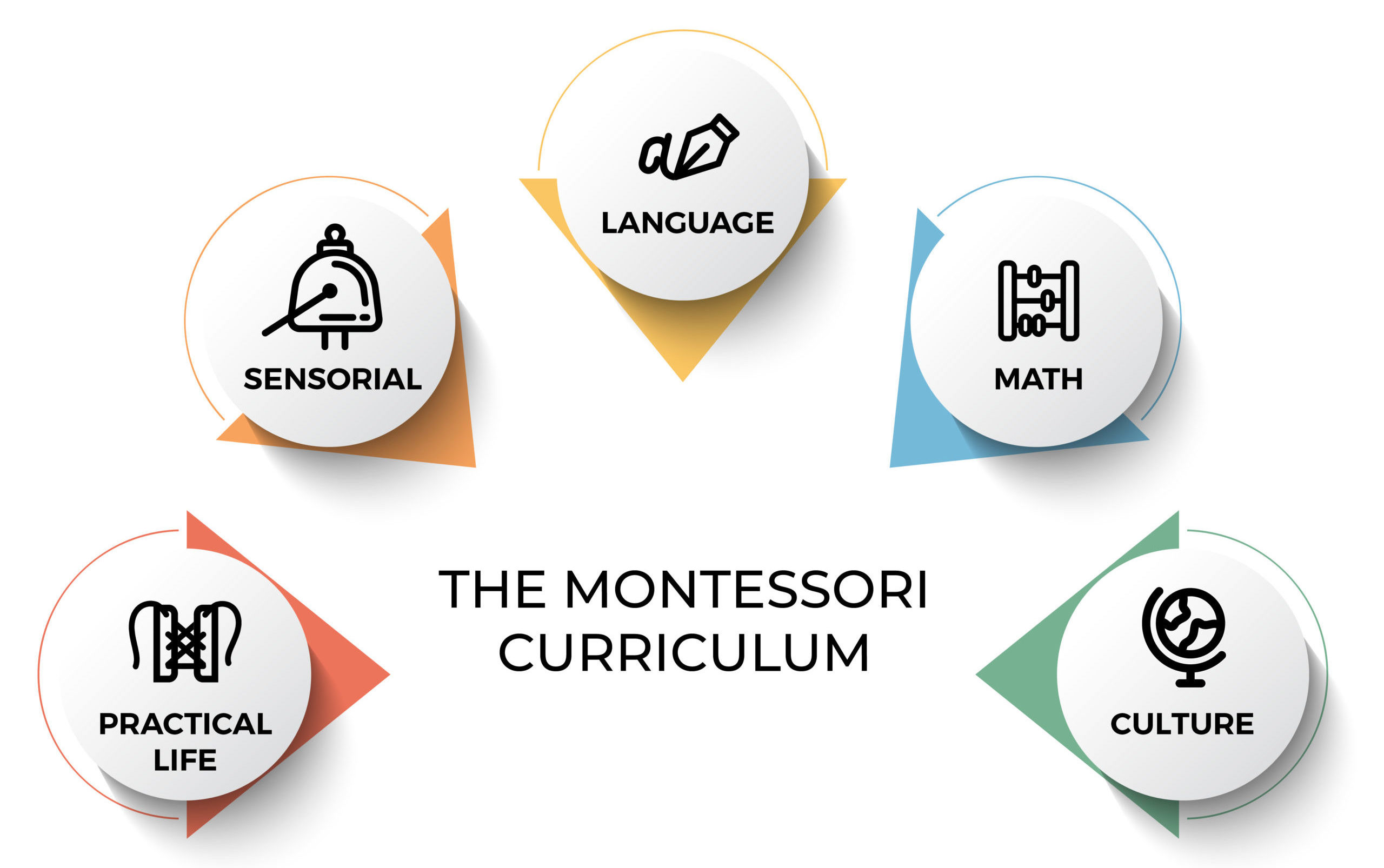METHOD AND CURRICULUM

THE MONTESSORI METHOD
Introduced originally by Dr. Maria Montessori over a hundred years ago, the Montessori method complements children’s own ability to learn through sensorial exploration and self-discovery. The activity-based learning in a three-year mixed-age Montessori Casa classroom allows children to collaborate and learn from one another, gaining confidence, leadership, problem-solving, communication, collaboration, and other social skills naturally.
Fundamental to the Montessori approach is acknowledging and respecting the child as an individual. Each activity in the classroom is purposefully designed for the child to explore and learn independently. While the freedom is given for the children to choose their own activities, it is the responsibility of the Directress to observe them, understand their progress individually, and direct each child accordingly. Hence the title Directress and not Teacher.
The three-year age mix in the Casa classroom, and the freedom, respect, and trust in the children’s natural and independent ability to learn through self-discovery provide the foundation for holistic development – i.e. the development of intellectual, physical, emotional, social, and spiritual areas altogether for enabling our children to become well-balanced individuals.

THE MONTESSORI CURRICULUM
The Montessori Casa curriculum and thus the classrooms are purposely organized into five areas.
While each section is independent, the purpose and the organization of the materials, as well as the learning concepts, are often intertwined with one another. For example, the materials in each section of the classroom are subtly organized in a left to right fashion, progressing from easier ones on the left to the more challenging ones on the right as an indirect preparation for reading English (i.e., left to right).
Practical Life
Practical life activities focus on four main areas – control of movement, care of self, others, and the environment, and grace and courtesy. They are the distillation of everyday activities the child experiences at home and in the classroom.
The practical life activities involve the children in precise movements that challenge them to concentrate and work uninterrupted to complete the activity, which provides them with the feeling of satisfaction and builds confidence.
These activities are aimed at developing fine motor and other basic skills needed to advance to the more complex activities.
Sensorial
Sensorial activities bring clarity to the mind by helping the child sort, arrange and classify their day-to-day experiences. Abstract concepts of time, imagination, numbers, weight, etc. are unfathomable for a child, and the objective of these exercises is to form the basis for abstraction in thought.
Sensorial activities first enable a child to isolate fundamental qualities perceived through the five senses – colour, smell, texture, taste, sound, shapes, dimension, temperature, weight, etc. Once mastered, children are then introduced to distinguish qualities such as long/short, loud/soft, rough/smooth, circle, square, cube, etc.
Language
Language is also introduced using concrete materials – through touch and tactile-based activities. Alphabets are introduced through meaningful games and tracing letters, then to small phonetic words, and eventually to complex words and sentences.
Since writing is one’s own thoughts, to encourage self-expression and creativity, children are taught to write first before reading.
The enrichment of language and vocabulary is nurtured through the use of good language, meaningful conversations, poetry, storytelling, voicing opinions, and purposeful talk. The Casa curriculum includes advanced grammar and sentence analysis for older children.
Math
Math concepts such as sequencing, sorting, shapes, and patterns are also introduced through sensorial activities, making them interesting, and understandable for children.
Abstract math concepts such as addition, subtraction, division, and multiplication are first learnt using concrete materials such as beads, number rods, and numeral cards. Children then move to advanced math exercises that require them to associate numerals to quantities in their minds – i.e., abstract without needing beads or cards.
The activities are sequenced to make the foundation for math solid and to aid the development of abstract reasoning, critical thinking, and problem-solving skills.
Culture
Culture is presented as extensions of the four areas listed above and covers topics such as Geography, Biology, Botany, Zoology, Art, Music, Dance, and Physical Education.
Children learn about people and cultures around the world and the lessons related to geography, nature, and other forms of life connect the children to our world and the global community.
The aim here is to inspire the child to respect all human beings, other forms of life, nature and make them environmentally conscious. Art, music, poetry, etc. allows the child to enjoy and explore a variety of creative activities.
This site is protected by reCAPTCHA and the Google Privacy Policy and Terms of Service apply.
